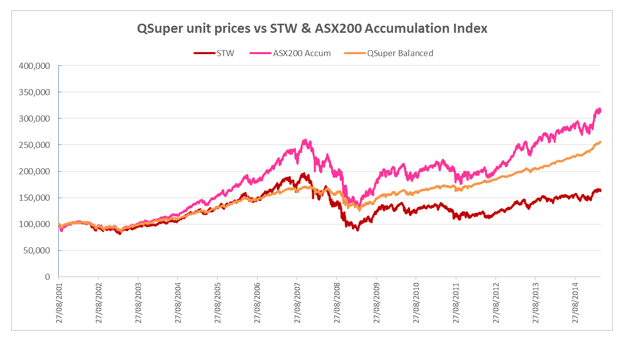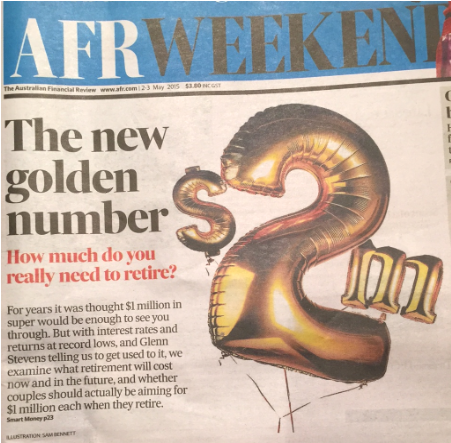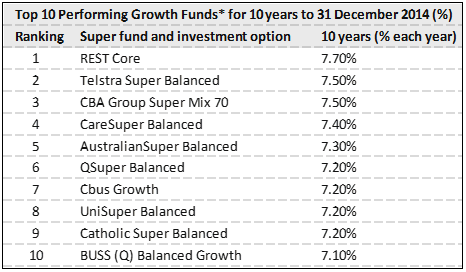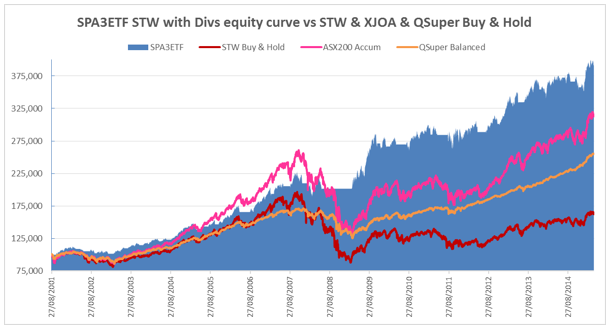This was the front page of the AFR WEEKEND last weekend on 2nd May.
Whilst this attention grabbing headline is a very important question, I think that a far more important question that needs to be asked by the vast majority of Australian investors is “How can I maximise my chances of reaching the “new golden number?”
The simple answer is: do not rely on investing your retirement monies with Super Funds. This can, and will cost you 100’s of 1000’s of dollars over a life time of investing. A far better choice is to “Do it Yourself”.
“But I don’t have the time to learn and do it myself!” I hear you exclaiming.
This is exactly the type of response that fund managers want to and love to hear.
My response is always a rhetorical question: “how many hundreds of thousands of dollars difference will it take to make you lose the attitude of apathy and take responsibility for the investment performance your money?”
Here are two simple do-it-yourself investing methods that will put you way ahead of where you might have been if you continue to abdicate responsibility for your money to the so called ‘professional fund managers’:
- Buy and hold the ASX200 via the STW Exchange Traded Fund (ETF) and re-invest all dividends. The ASX 50 and ASX20 are also alternative ETFs that could be considered.
- Put a bit of extra effort into removing the possibility of your funds being subjected to a 2008 type bear market. (When the ASX200 fell by 55%!).
To put this into perspective and compare performance, let’s take a look at the best performing managed super funds in Australia over the past 10 years.
QSuper Balanced was the best performing Super Fund in calendar year 2014 against every other Super Fund in Australia including active Super Funds, Corporate Super Funds and Industry Super Funds that meet a minimum requirement (Source: CHANT West 20 January 2015 media release).
It was also placed 6th over the 10 years to 31st December 2014 against all-comers in the Super Fund industry that meet a minimum requirement (Source: CHANT West 20 January 2015 media release) . REST Core was the best performing Australian Super Fund over this 10 year period returning, on average, 7.70% compounded each year BEFORE admin fees and adviser commissions!
“*Performance is net of investment fees and taxes. The returns in the table are before any administration fees or adviser commissions are deducted. The performance data is based on Chant West figures, and the table ranking is based on individual investment options offered by a superannuation fund, and the investment options involved in the ranking process look after assets worth $1 billion or more.”
Here is a graph that compares the performance of the QSuper Balanced fund with that of the ASX200 Accumulation Index and the STW Exchange Traded Fund (ETF).
 It can be clearly seen that the best-performing Superfund in 2014, the orange line in the middle, considerably underperformed the ASX200 Accumulation Index, the pink line at the top, over the period shown. The STW chart, the bottom brown line, does not include dividends.
It can be clearly seen that the best-performing Superfund in 2014, the orange line in the middle, considerably underperformed the ASX200 Accumulation Index, the pink line at the top, over the period shown. The STW chart, the bottom brown line, does not include dividends.
This chart covers the 13.65 year period since STW was listed in August 2001 to April 2015.
The first method mentioned above where you buy and hold the STW, then re-invest the dividends, will achieve similar results to the ASX200 Accumulation index.
All investors should, at the very least, do this.
Stop paying your dollars to the industry “professionals” to underperform the benchmarks. Stop handing over your Super contributions to pay massive salaries to investment managers, commission to sales people, and fees to advertising agencies to spoon feed advertising rubbish right back at you about how well they perform because they have less fees!
The point is that they have fees, they eat into YOUR retirement money and they underperform over the long term.
Let’s take a look at some numbers. A buy and hold investment in the ASX200 with reinvesting dividends over a 30 year period at the same annualised return achieved over the last 13.65 years would produce an annualised gain of 8.90% and grow $100,000 to $1,290,000.
This is 1.7% better per year than the best performing managed super fund of 2014, if it achieved 7.2% over the 13.65 years. As can be seen in the table below, this could make a difference of $485,000.00 to YOUR retirement funds.
Yes, a miserly 1.7% per annum of compounded growth over 30 years = $485,000.00 when starting with $100,000.
This excludes ongoing super contributions over the 30 years.
The third column in the table below shows what could potentially be achieved by the second method mentioned above, with a bit more effort to avoid a 2008 type bear market in the future of a 55% fall in the market.
Using the SPA3ETF methodology to trade, on average, 2.2 times per year over the 30 year period could result in a 10.53% annualised gain. This 3.3% per annum difference would result in an extra $1.21 million in your retirement funds and would massively increase your chances of reaching the Fin Review’s “new golden number”.
Using the SPA3ETF method to actively invest in the STW ETF can achieve the performance indicated by the blue shaded area in the graph below. The chart clearly displays the outperformance of this method when compared to a buy and hold strategy of the STW, the ASX 200 Accumulation Index (= STW with dividends), and the best performing managed Superannuation fund of 2014.
Sure this may be academic because nobody knows what the future holds and the AFR article was about preparing for lower returns on the way to the golden number. But there are some principles at play here. Handing over your money to the investment managers is NOT the highest probability way of accumulating wealth. The 1% – 3% compounded growth that they take in fees and commissions will leave you with much, much less in retirement.
When the Super funds in Australia started there wasn’t an instrument such as an ETF with low investment costs and index-type performance. Now there is and it’s high time that more time poor investors cottoned on to them and made the change right away.
Trying to select stocks and manage a portfolio of many stocks is not necessary any longer. A stock portfolio approach could do better but requires far more time and effort. As shown above, the use of the SPA3ETF methodology to actively invest in the STW ETF, trading on average 2.2 times per year, can achieve well above average returns and make a significant contribution to the amount of money you will have to fund your retirement.
Past performance doesn’t guarantee future performance. But it does raise the probabilities of doing way better than you otherwise might have!!





